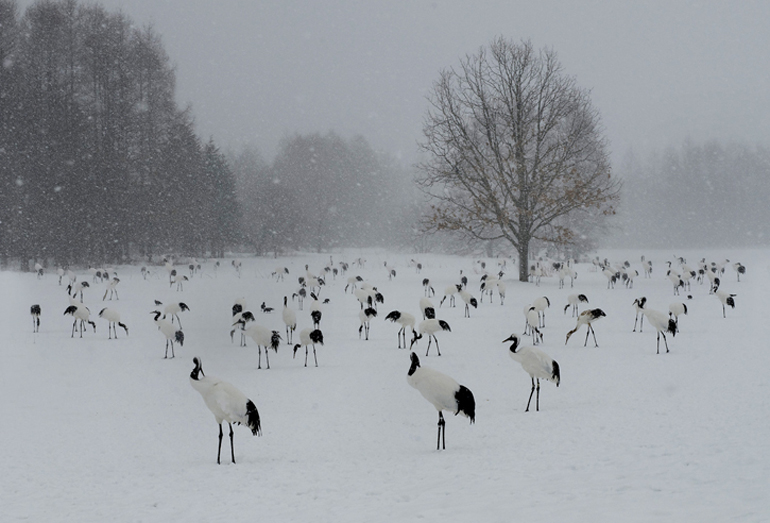
Japanese consider the tancho, or red crown crane, a national treasure, revered as a symbol of longevity, good luck, and happiness. Historically the crane has been a part of legend and folklore. Today the Japanese paint and take pictures of it, carve it into statues, and pen it into poems. They imitate the grace of its dance, and name cities, streets, and parks after it. They hang the tancho as colored ornaments in temples, shrines, and on stone monuments to Hiroshima in Peace Memorial Park. Scientists study its behavior through banding in a feeble attempt to understand it. Farmers feed it in the winter in a feeble attempt to save it. And they have killed and eaten it to near extinction.
Sadly the tancho in Japan is mostly an icon today. Ironically this endangered bird's image is seen everywhere-on teacups, fans, kimonos, jets, et al-as a symbol, and almost nowhere in the wild. Its range in Japan is limited to a few small reserves on the remote island of Hokkaido.
The story of the red crowned crane in Japan is the same for many other species. The nation's reverence for animals is ancient, but efforts to protect them are very new, and a gesture at most. Since the mid 20th century nearly 200 species, including the red crowned crane, have been designated as "national monuments." They are thus protected by laws which prohibit their harm unless there is a conflict with human enterprise. There's always a catch! (next photo)